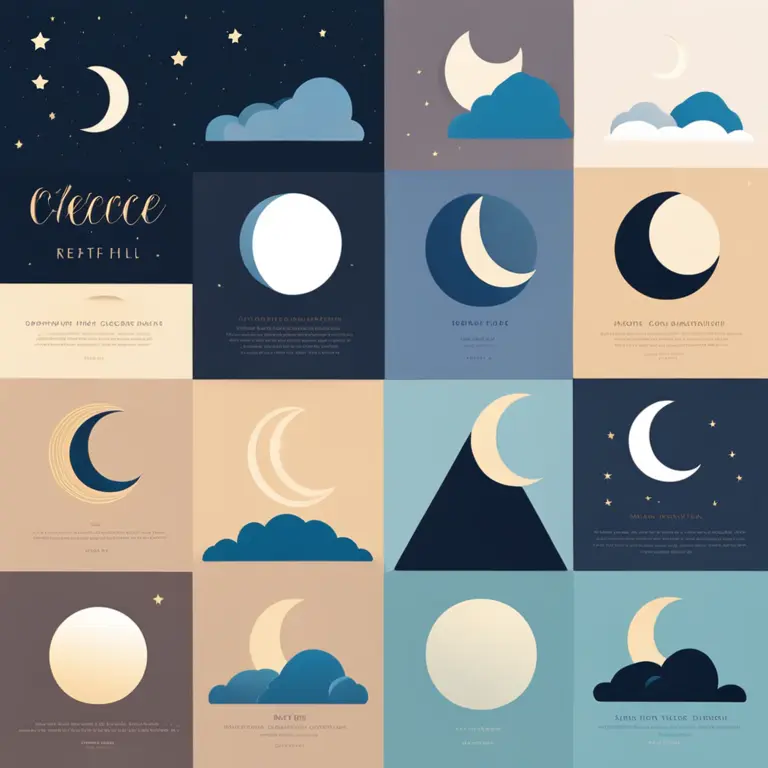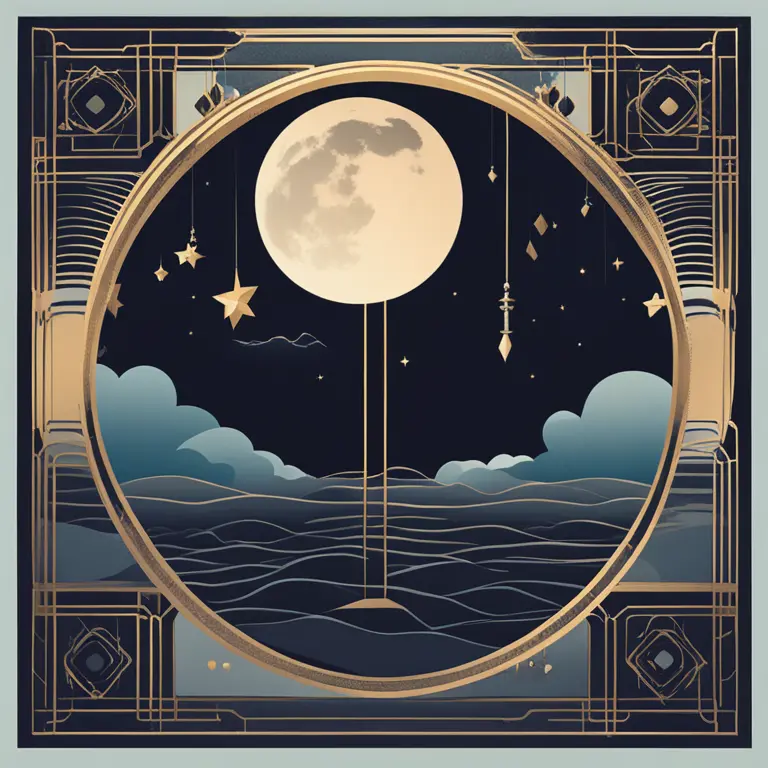
Moon Phases & Sleep Patterns Explored
Discover how the different phases of the moon might affect your sleep cycle and ways to potentially harmonize your rest with lunar rhythms.
article by Priya Deshmukh
Moon Mystique and Slumber Cycles
For centuries, the moon has been a symbol of mystery and wonder, influencing cultures and beliefs around the world. In modern times, scientific inquiry has started to explore the moon's potential impact on various aspects of life, including sleep. The lunar cycle, which lasts approximately 29.5 days from new moon to new moon, is believed by some to affect human behavior and physiology. This article will delve into how each phase of the moon could influence our nightly rest, even as we transition into the year 2024 and beyond, when the fascination with celestial bodies is expected to continue shaping our understanding of health and wellness.

New Moon and Restful Nights
During the new moon, when the moon is not visible from Earth, it is traditionally associated with new beginnings and introspection. Some studies and anecdotal evidence suggest that the darker nights of the new moon phase may lead to deeper and more restful sleep, perhaps due to lower levels of ambient light pollution. This stage of the moon’s cycle can be the perfect time for setting intentions for the month ahead, including prioritizing sleep hygiene and setting consistent bedtime routines. With advancements in sleep technology and an increased focus on the importance of sleep for overall health, individuals might find integrating new moon rituals into their lifestyle beneficial for their sleep quality in 2024.

Waxing Crescent to First Quarter
As the moon transitions from a new moon to a first quarter moon, its increasing illumination can interrupt the darkness of night, potentially impacting sleep. The waxing crescent period is often a time of action and energy, which might explain why some people feel more restless during these nights. The first quarter phase, with its characteristic half-moon shape, is said to focus on challenges and growth. It's possible that during this period, individuals could experience an increase in vivid dreams or nighttime awakenings. Harnessing the proactive energy of the waxing crescent and the first quarter can be useful for tackling sleep disturbances head-on.

Full Moon: A Time of Intensity
The full moon is perhaps the most talked-about phase when it comes to its purported effects on sleep. Its bright and complete presence in the night sky has been linked to reduced melatonin levels and shorter sleep duration in various studies. People often report feeling more energized or restless during the full moon, and some claim that their dreams are more intense or memorable. While conclusive scientific backing is yet to be fully established, as of 2024, the fascination with the full moon’s impact on sleep continues to spark research and dialogue. Adapting your sleep environment to mitigate the increased light during this phase can assist in promoting better sleep.

The Waning Moon and Subdued Energy
Following the peak of the full moon, the moon begins to wane, diminishing its luminosity each night. The diminishing light may contribute to a more conducive sleep environment, leading to gradual improvements in sleep quality. The waning period, with its decreasing energy, is often seen as a time for release and letting go, which might also extend to releasing tensions and stresses that hinder sleep. With the waning moon, it's an auspicious time to focus on relaxation techniques and soothing nighttime rituals. As we approach 2024, exploring the waning moon's potential for encouraging a tranquil state before sleep could become an even more prominent aspect of sleep wellness trends.
Last Quarter to Balsamic Moon: Reflect and Recharge
The last quarter moon, when half of the moon’s disk is illuminated, signals a time to reflect on the past month's achievements and transitions into the balsamic moon phase, also known as the waning crescent. This quieter phase of the lunar cycle is considered ideal for rest and recuperation after the active and intense phases. The lesser light at night and the symbolic period of completion can make for a calming atmosphere that potentially aids in deeper and longer sleep. As personal wellness becomes increasingly intertwined with cosmic rhythms, the phases of the moon are poised to play a significant role in comprehensive sleep strategies.
Published: 1/19/2024
Modified: 1/19/2024
More predictions
Come back here soon to learn more about yourself and your future


Moon Phases: A Celestial Cycle Explored
Delve into the cyclical journey of the Moon, understand its phases, and explore their significance in astrology and personal insight.


The Significance of the Moon's Phases
Discover the significance of the moon's phases in astrology and how they influence our lives.


Your Moon Phase Match: Find Celestial Harmony
Discover which moon phase best aligns with your personality and how this celestial body influences your life journey.